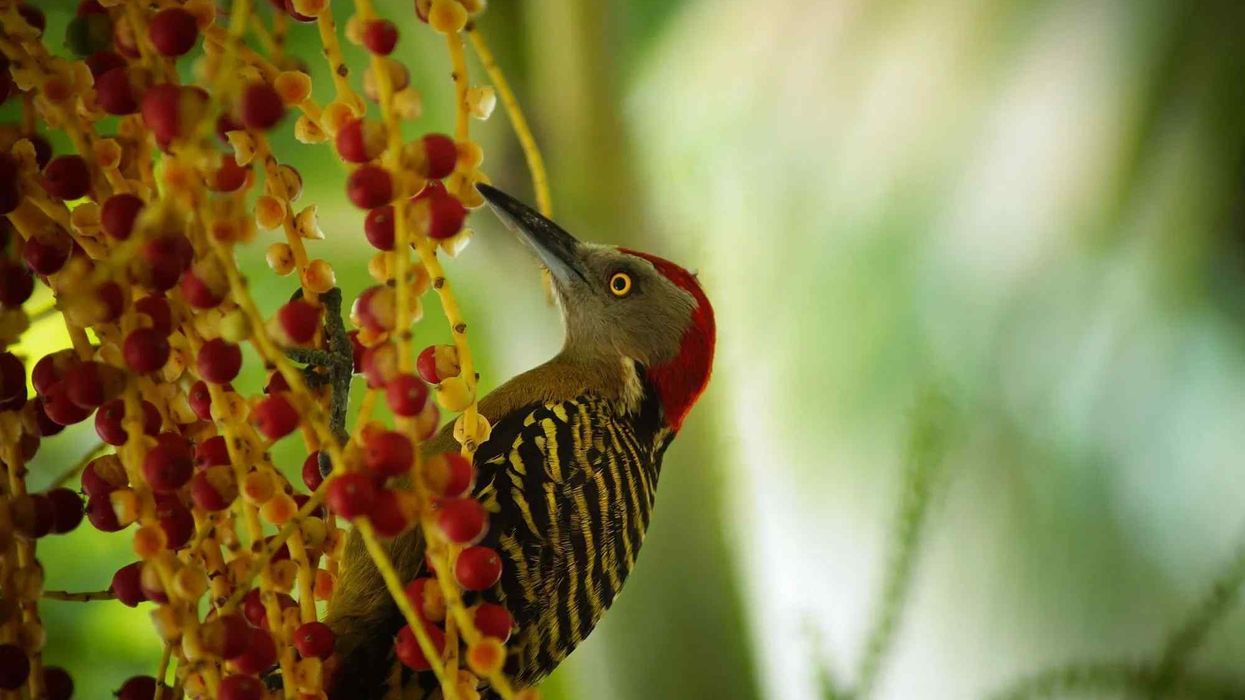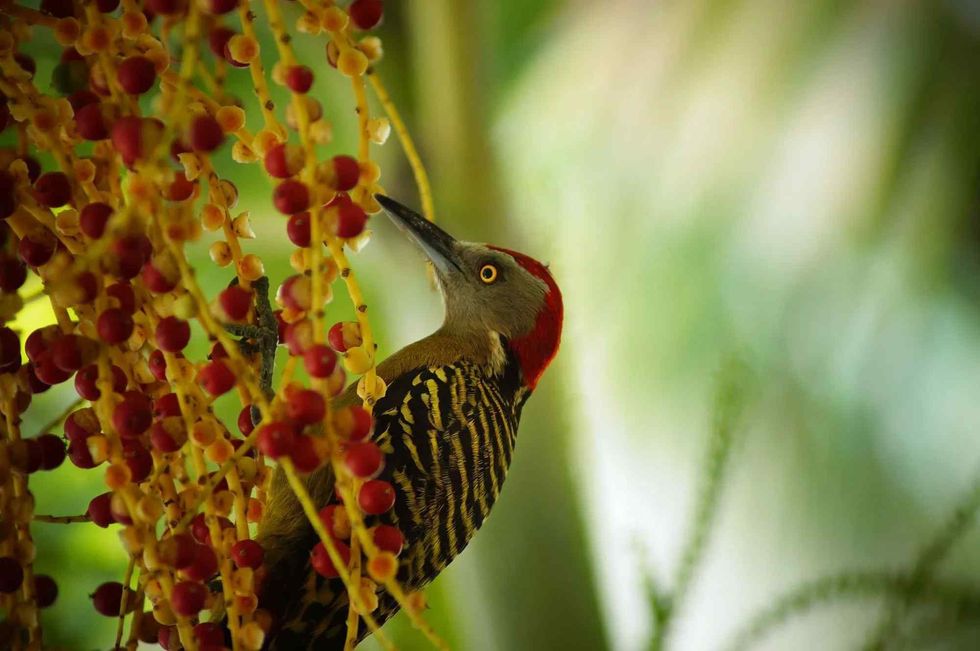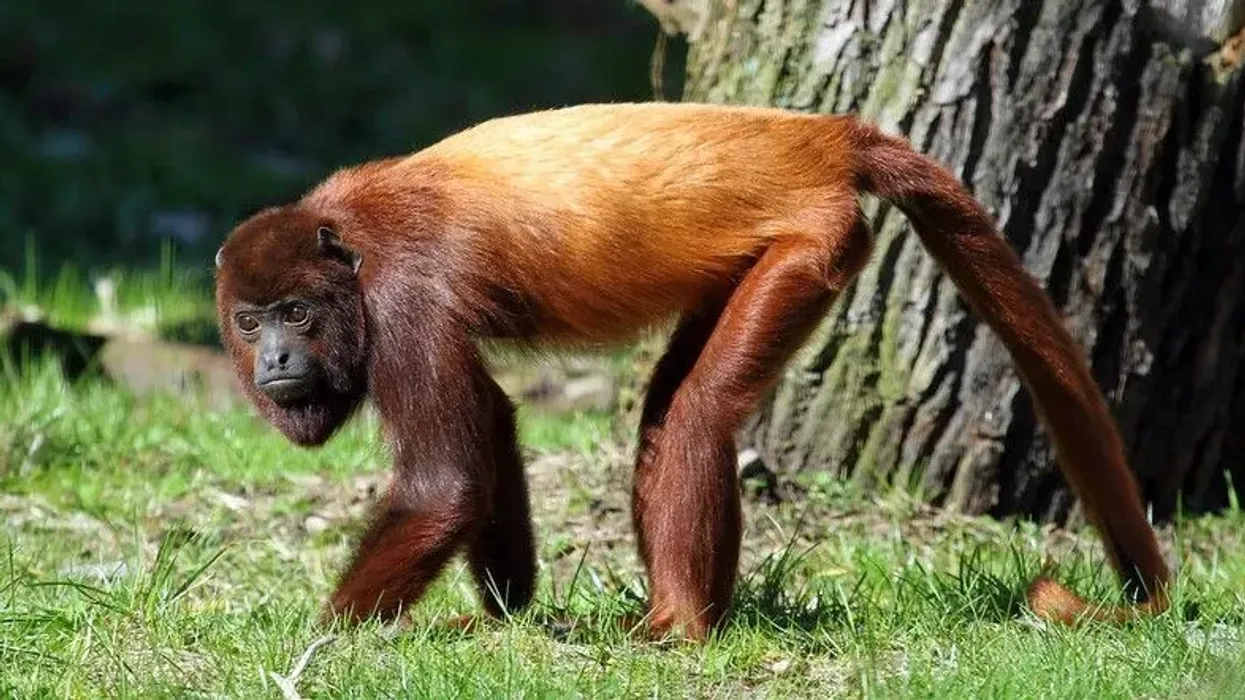The Hispaniolan woodpecker (Melanerpes striatus) is a member of the woodpecker group and the order Piciformes. This bird is found in the populous region of Hispaniola.
They are extremely colorful woodpeckers that can be found throughout the Hispaniola region in pairs and spend most of their time digging into trees or telephone poles to make nests or in the search for food.
Currently, the Hisponionlan woodpecker is in the Least Concern list on the IUCN Red List and will continue to be so for years to come as they have few natural predators.
If you liked these true facts about Hispaniolan woodpecker, then you'll surely like these facts about the cockatoo and eastern kingbird too!
Hispaniolan Woodpecker Interesting Facts
What type of animal is a Hispaniolan woodpecker?
A Hispaniolan woodpecker (Melanerpes striatus) is a bird species that is endemic to the Caribbean island of Hispaniola that is currently divided into the country of Haiti and the Dominican Republic. These tree-dwelling birds are widespread throughout these areas with a scattered population distribution.
What class of animal does a Hispaniolan woodpecker belong to?
Much like most bird species, the Hispaniolan woodpecker belongs to the Aves class of animals. This bird also belongs to the order Piciformes which is the name for the woodpecker class.
How many Hispaniolan woodpeckers are there in the world?
Due to the large Hispaniolan woodpecker range map, it is difficult to state an exact number of the population of these birds as their widespread population distribution makes it tough to list the exact number of breeding and non-breeding birds.
Where does a Hispaniolan woodpecker live?
The Hispaniolan woodpecker (Melanerpes striatus) is found in swamps, marshes, forests, and human settlements and since these birds are an endemic species, they are found in the Caribbean islands. They are found scattered on the Island of Hispaniola, split between Haiti and the Dominican Republic as these areas serve as a safe haven for these birds in the world.
What is a Hispaniolan woodpecker's habitat?
In their native Caribbean range, these birds are found in various areas on the surrounding island structures and can be found in a large or small colony in different landscapes including trees, forests, grasslands, and plantations.
Who do Hispaniolan woodpeckers live with?
Based on a plethora of research work, it can be stated that the Hispaniolan woodpecker unlike other members of the woodpecker family is a social species. They live in a tightly knit colony in close proximity to each other as they come together to protect nesting sites from predators and search trees and the grounds for fruits.
How long does a Hispaniolan woodpecker live?
Unfortunately, there is not much information on the lifespan range of the Hispaniolan woodpecker, making it tough to state the maximum or the minimum age of these social birds.
However, based on the studies of other woodpecker species including the pileated woodpecker or the red-bellied woodpecker, the average lifespan of these endemic birds is between 12-13 years in the wild.
How do they reproduce?
The reproductive behavior of this endemic species follows a pattern that sees them breeding throughout the year, but in most cases, mating occurs between February and July. During this period, the Hispaniolan woodpecker forms colonies of pairs that range from 3-20 individuals.
They create nesting in trees or telephone poles with several nesting sites in a single tree. In most cases, one to three trees are used by this species when they are creating a nesting colony which in most cases, includes helpers.
The nest hole in tree colonies is mostly excavated by the males as they have longer bills compared to the females. The hole is usually situated at an elevation of 6.5-36 ft (2-11 m) in a tree, or a telephone pole.
It is common for a large entrance to be in view for ease of access. Nest sites are defended by the male.
After mating, the females lay four to six eggs which are white in color. The incubation period of the Hispaniolan woodpecker female has not been thoroughly documented, but it is stated that they have a 9-17 days incubation period which is common.
Males and females take part in the incubation process and on hatching, both the Hispaniolan woodpecker female and baby are taken care of by the males.
What is their conservation status?
This endemic bird is a common view in many human settlements and tree-tops of dense forests which means that this bird is common throughout the Caribbean islands of Hispaniola.
As a result of this common occurrence, the population of this endemic bird is large enough for these birds to be classified as a species of Least Concern on the IUCN Red List.
Hispaniolan Woodpecker Fun Facts
What do Hispaniolan woodpeckers look like?
The Hispaniolan woodpecker (Melanerpes striatus) is one of the most colorful woodpecker species in the world with a base color of gold and black. The species is sexually dimorphic, which in this case, means that the male is larger than the female and has a longer beak in comparison.
A striped black and white upper neck is visible in the plumage and the wings and back rump are striped in black and gold. They have a greenish-yellow rump with some of the feather tips being red in color.
The tail is a combination of black and red and the upper-tail coverts are also red. A grayish-brown tone can be seen on the underside of the wings with a gray or olive on the tail underside.
The crown on the head is gray in color with a gray throat and olive or brown underparts with dark shades on the flanks. They have a yellow iris, with a long and slender gray beak.
They have two legs which are gray too. The only difference between the male and the female is the black crown and red nape of the female.

How cute are they?
These woodpeckers are absolutely pretty to look at owing to their colorful plumage that consists of the colors olive, red, black, yellow, and gray with a dark shade. This colorful description of the Hispaniolan woodpecker serves as a great cuteness factor.
How do they communicate?
The Hispaniolan woodpecker (Melanerpes striatus) is a vocal bird and its sounds can be heard from the nest sites which include yapping and nasal calls.
How big is a Hispaniolan woodpecker?
The Hispaniolan woodpecker is a diminutive bird and the maximum size of a full-grown adult is between 7.8-9.4 in (19.8-23.8 cm). If we were to compare them to a larger woodpecker species, for example, the ivory-billed woodpecker grows between 18.8-20.8 in (47.7-52.8 cm), making the Hispaniolan woodpecker a mini woodpecker.
How fast can a Hispaniolan woodpecker fly?
The Hispaniolan woodpecker, similar to most woodpeckers, is not known for its flight. As a result, not much information is available on their flight speed.
How much does a Hispaniolan woodpecker weigh?
The weight range of the Hispaniolan woodpecker lies between 2.2-3.2 oz (62.3-90.7 g).
What are the male and female names of the species?
There are no specific names assigned to either sex.
What would you call a baby Hispaniolan woodpecker?
A Hispaniolan woodpecker baby is called a chick.
The feeding process of the chicks includes regurgitation and in most cases, parents are often seen feeding the chicks various fruits and insects. Juveniles have a black crown with red and white spotting that is complemented with an orange nape and a dark iris and as they grow, they get their natural yellow and olive colorations.
What do they eat?
The Hispaniolan woodpecker (Melanerpes striatus) is omnivorous in nature and its diet consists of different fruit variants, insects, scorpions, and lizards. Fruit variants are a major part of its diet compared to insects.
Are they poisonous?
No, this bird is not poisonous. They are, however, aggressive towards other birds during the mating season and will produce loud sounds consisting of high-pitched calls to scare off competitors or predators.
Would they make a good pet?
No, the Hispaniolan woodpecker (Melanerpes striatus) is a wild bird and is not suited to life in captivity, unlike other pet bird species, for example, the parrot. In some parts of the island, displacing this bird from its nest and selling it in the pet trade can be illegal.
Did you know...
The tail feathers of this bird provide them with support when they are making holes in trees.
The Hispaniolan woodpecker has feathered covered noses which stops splinters and dust out of their nostril.
Similar to most other woodpeckers, the Hispaniolan woodpecker has a long tongue that is twice the size of its tongue.
Despite the popularity of this elegant black and gold bird in the Hispaniola region, it is beaten in popularity by the Hispaniolan trogon which has become the National bird of Haiti.
Most woodpeckers have a base color of red, black, yellow. Combinations of olive, green, and brown are also common among them.
What's unique about a Hispaniolan woodpecker?
The Hispaniolan woodpecker (Melanerpes striatus), unlike other members of the woodpecker family of Picidae, is social and creates colonies when nesting.
Are Hispaniolan woodpeckers endangered?
No, the Hispaniolan woodpecker (Melanerpes striatus) is not endangered. This black and gold woodpecker is a Least Concern species and there are no threats to them that can cause them to become vulnerable or endangered.
Here at Kidadl, we have carefully created lots of interesting family-friendly animal facts for everyone to discover! For more relatable content, check out these gopher facts and eastern harvest mouse facts for kids.
You can even occupy yourself at home by coloring in one of our free printable long-eared jerboa coloring pages.
Second image by Ron Knight from Seaford, East Sussex, United Kingdom.










